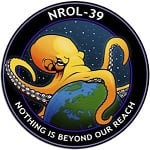You know the smell dirt makes when its wet? It’s called petrichor and humans can smell it better than sharks smell blood in the water. It is detectable by the human nose at 0.4 parts per BILLION. This gave early humans a huge advantage in finding water when needed. https://en.m.wikipedia.org/wiki/Petrichor
Get dunked on, sharks.
Literally called dirtblood, I love it
For the most part, yes, at least on a large scale. Proximity to a water source was pretty much a requirement for developments for most of history.
On the smaller side of things, other commenters have already mentioned that we had ways to store water before bottles existed.
Everyone has sippy bottles now but when I was young in the late 70s we played out all day and did not drink for 7 hours at a time and no one died. Alright one person died but mainly not.
My wife won’t leave the house without several water containers as it she is crossing the god damn Sahara. We live in the North East, its not even dry! I always ask her how she survied childhood without stupid fancy bottles that are marketed. Fortunately she is patient with my crap and loves me…
Yes, humans used to live much closer to water sources. On a town level, if you didn’t have a creek or river or water somewhere nearby you just didn’t settle there. Available water was absolutely necessary for agriculture, domestic animals, cooking, washing, and of course drinking. On a personal level, you would go in the morning to a central well or water source and gather your water you would need for the day. Depending on the household needs it might be multiple trips with heavy, full vessels. You would put the water in to household water vessels, like a basin for cleaning or a ewer for washing or your cook pot. If you were thirsty at home, you would take a dipper (basically a ladle) and take some water from the household supply.
Where did you get the impression we didn’t used to have water bottles? They weren’t made of plastic or metal but humans have carried water with them for probably as long as we’ve used tools. You can carry water in drinking horns, in clay pots, wooden buckets, in dried out animal bladders or leather skeins, and there’s literally a type of gourd called a “bottle gourd” which has been dried out and used as a personal water bottle for milennia across any region that can grow them. Don’t underestimate human ingenuity, we didn’t always have access to the same technology and materials but we have always been able to problem solve.
Adding to this, some plants and fruits have high water content (watermelons and some cacti), so you could keep your body hydrated without drinking water. For hunter-gatherers, who could likely be on the move away from water sources, this knowledge was crucial.
More interestingly, baobabs, huge “fat” trees found throughout the African continent, can be used as water tanks
We had water bottles way before plastic… we used wood, mud, clay, stone, and animal parts to store water before recorded history…
Really?
https://en.m.wikipedia.org/wiki/Waterskin
Also, there was an ice age. Not everyone lives in scorching climates. Theres fresh water around me 247/365. As waterskins are somewhat recent probably, in terms of evolutionary history.
The answer should be fairly obvious to anyone who’s looked at an European map, there’s a reason why the oldest cities are always around or near rivers. Also humans had bottle-like technologies since essentially forever, it’s probably one of the first tools to be developed after “pointy stick”.
TiL that I’m early human. 1970s baby, but early human
Going backwards in time, they had metal and brass containers, before that they had wooden buckets and barrels, ceramic pots, carved out animal parts or fruit of plants.
Before farming, probably a good portion of the water early people subsisted on was from the food they ate. (Berries and fruit, fish, meat, etc.) Water might pool around rocky areas after rain, even if there was no stream nearby in a pinch.
Humans sweat. It is one of our superpowers and enables endurance hunting. Anthropologists theorize that early humans would have had to have developed water carrying technologies for this to be viable. They study primitive hunter gathers who still practice endurance hunting and they use water skins during the hunt.
That is super cool!
Pretty much yes. If you look at a map, you’ll notice that most cities, especially old (like old old) ones are next to or near water sources. There are, of course, other reasons for this as well: building a settlement by water will also give you the opportunity to use boats, for transportation and shipping. Merchant cities tend to be by seas and oceans, because transporting cargo by ships is much more efficient than by land, especially before airplanes. Then there’s fishing, crop irrigation, and just that humans like bodies of water.
But also, what do you exactly mean by water bottle? Because water transportation and storage vessels have been around for quite a while, and aqueducts have been built by various civilisations across history.
For the most part, yes. That is why they tended to congregate around water sources. Even early settlements and towns and cities were near waters sources even after we had portable water containers because water is heavy and large numbers of people need a large water source.
But before we changed the environment significantly, there were a lot more potable water sources. More streams, more water pooled up after rains, etc. that could be ingested because of a lack of human pollution. If humans were within a days walking distance of a water source, they could do their hunting and gathering nearby and drink up afterwards.









